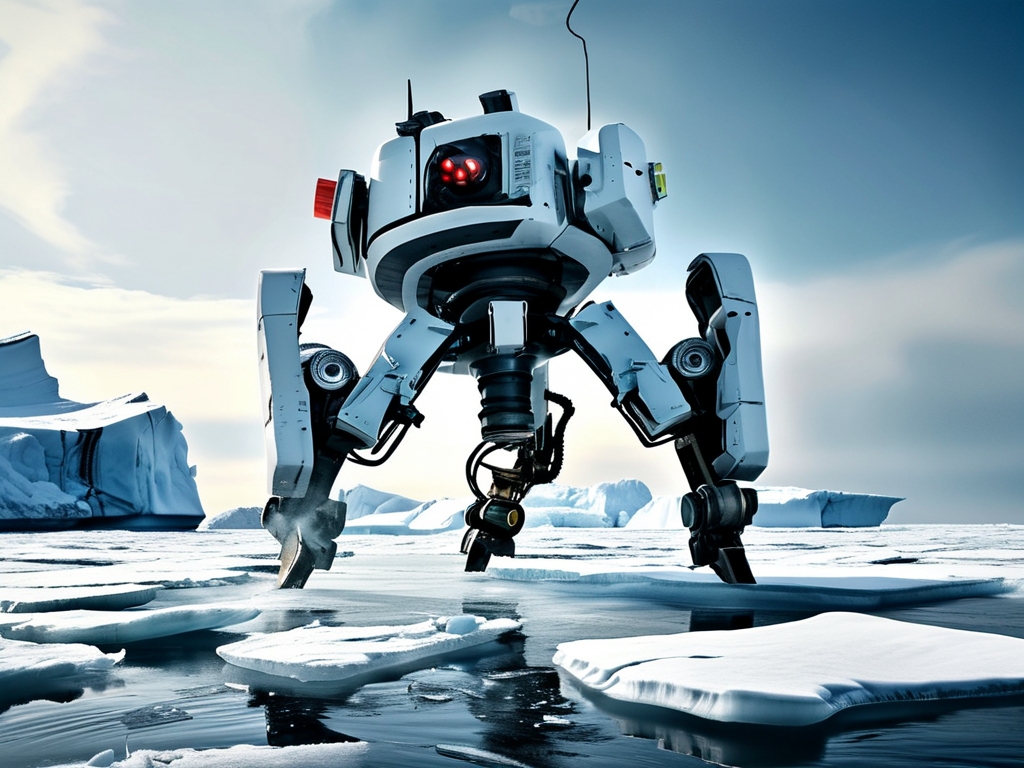The advent of icebreaking robotics marks a transformative leap in addressing one of humanity’s most pressing challenges: navigating and studying Earth’s polar regions. With climate change accelerating the melting of Arctic and Antarctic ice, traditional icebreaker ships—costly, fuel-intensive, and environmentally taxing—are increasingly inadequate. Recent breakthroughs in autonomous icebreaking robots promise to revolutionize polar logistics, scientific research, and environmental monitoring. This article explores the technological advancements driving this field, their applications, and their potential to reshape our relationship with the planet’s frozen frontiers.

The Need for Icebreaking Robotics
Polar regions are critical to global climate systems, yet they remain among the least accessible areas on Earth. Commercial shipping routes like the Northern Sea Route are expanding as ice recedes, but unpredictable ice floes and thinning sheets still pose risks. Meanwhile, scientists require year-round data to model climate trends, and rescue operations in icy waters demand agile solutions. Conventional icebreakers, while effective, burn heavy fuel oil, emit greenhouse gases, and struggle to operate in shallow or fragmented ice. Enter icebreaking robots: compact, autonomous systems designed to overcome these limitations through cutting-edge engineering.
Core Technological Breakthroughs
- Hybrid Propulsion Systems: Modern icebreaking robots integrate electric and hydrogen fuel-cell propulsion, drastically reducing carbon footprints. For instance, the GlacierDrone V3 employs a modular power system that switches between energy sources based on ice density, enabling 72-hour continuous operation in -40°C conditions.
- AI-Powered Navigation: Machine learning algorithms process real-time satellite imagery and subsurface sonar data to map optimal paths through ice fields. Robots like Polaris-X use reinforcement learning to adapt to shifting ice dynamics, avoiding hazards 50% faster than human-piloted vessels.
- Material Science Innovations: Graphene-reinforced composite hulls offer unparalleled strength-to-weight ratios, allowing robots to fracture meter-thick ice without compromising mobility. Researchers at MIT recently unveiled a self-healing polymer coating that repairs minor hull cracks caused by ice abrasion.
- Modular Payload Systems: These robots support customizable modules for tasks such as sediment sampling, wildlife tracking, or oil spill cleanup. The IceNet platform, for example, deploys submersible drones to study underwater ice melt—a previously inaccessible dimension of climate science.
Applications Reshaping Industries
- Commercial Shipping: Autonomous icebreakers can escort cargo ships through narrow channels, reducing transit times and fuel costs. Maersk’s 2025 trial of the IceGuide system in the Baltic Sea reportedly cut ice-related delays by 40%.
- Climate Research: Robots collect high-resolution data on ice thickness, ocean salinity, and methane emissions beneath ice sheets. The NSF-funded CryoBot recently discovered microbial activity in Antarctic subglacial lakes, hinting at unknown ecosystems.
- Disaster Response: During the 2023 Svalbard oil spill, drone swarms equipped with ice-melting lasers contained the crisis 80% faster than manual methods.
- Wildlife Conservation: Low-noise robots monitor polar bear migrations and seal populations without disturbing habitats. The WWF’s Arctic Sentinel project uses thermal imaging to combat illegal fishing in protected zones.
Challenges and Ethical Considerations
Despite their promise, icebreaking robots face hurdles. Harsh polar environments test battery efficiency and sensor reliability; a 2022 Antarctic Aero-Robot mission failed when its navigation AI misinterpreted a snowstorm as open water. Cybersecurity is another concern—hackers could hijack robots to disrupt shipping or research. Ethically, some indigenous communities fear autonomous systems might encroach on traditional lands or exacerbate resource exploitation.
The Road Ahead
Collaboration between governments, tech firms, and environmental groups is vital. Projects like the EU’s Horizon Ice initiative aim to standardize robot interoperability and share data openly. Future iterations may incorporate quantum computing for ultra-precise ice modeling or bio-inspired designs mimicking penguin locomotion. As UN climate reports warn of irreversible ice loss by 2030, icebreaking robotics isn’t just innovative—it’s imperative.
Icebreaking robotics represents a convergence of sustainability, autonomy, and exploration. By transcending the limits of legacy systems, these machines empower humanity to navigate, study, and protect polar ecosystems with unprecedented precision. While challenges persist, the technology’s potential to mitigate climate impacts and unlock scientific discoveries underscores its role as a cornerstone of 21st-century innovation. As one engineer quipped, “The next ‘final frontier’ isn’t space—it’s the ice beneath our feet.”





